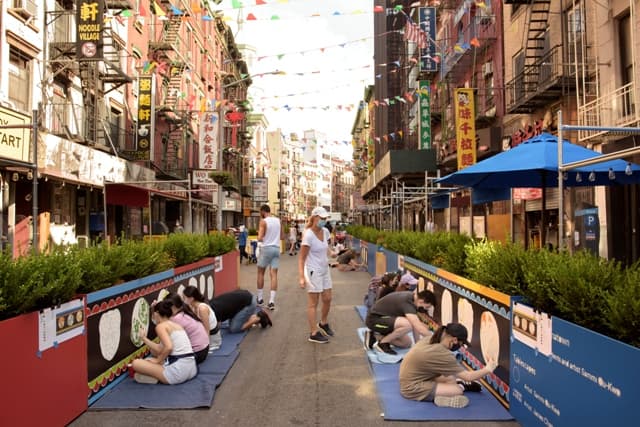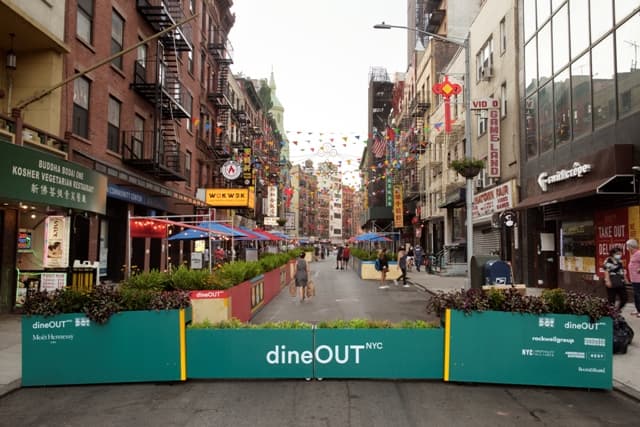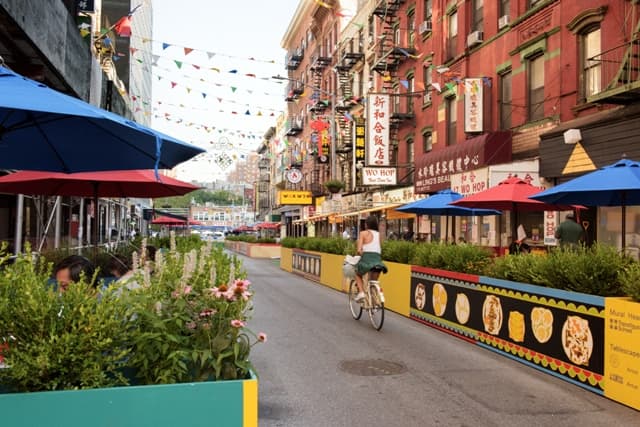When the COVID-19 pandemic became a reality in 2020, Rockwell Group began to think about ways for New York City restaurants to adjust their service and design. The toll on the industry, both economically and from a health perspective, was immense. Given our longstanding ties to the restaurant and hospitality community, we felt a responsibility and a desire to think about creative solutions. How could we help get restaurants back on their feet and restore jobs, while also allowing New Yorkers to come together safely to share a meal—a ritual intrinsic to the beating heart of the city? The answer seemed to lie in expanding all restaurants’ ability to serve customers outdoors.
Rockwell Group joined forces with the New York City Hospitality Alliance to identify six restaurants across the five boroughs where we could experiment with an outdoor dining “kit of adaptable parts.” This system, designed by our architects, was directly inspired by our experience with set design, pop-ups and events, and, of course, the elements that make restaurants a pleasure to be in, from materiality to views. The kit included flooring, barriers, shading, lighting, and space for equipment. We then expanded the program, working with the New York City Department of Transportation, to include communal outdoor dining in neighborhoods hardest-hit by the pandemic, from Chinatown in Manhattan to Woodside Avenue in Queens, and collaborating with community artists and students.

The success of DineOut NYC showed us the power of working spontaneously and quickly—the goal wasn’t perfection, but nimble flexibility. At every location, our design evolved to accommodate different communities based on their own specific needs. In addition to the site locations, that challenged us to think on our feet, changing the designs based on local programming and events. On Willis Avenue in the Bronx, for example, the Third Avenue BIDS wanted to tie in the community as much as possible, so we modified the design of our planter barriers to be mobile, offering greater flexibility to accommodate weekly programming and play areas for families and children.

DineOut NYC and other outdoor dining initiatives across the country and internationally have opened our eyes. They’ve challenged communities to think more expansively about how we can best use shared public resources—sidewalks and streets can be more than thoroughfares. We’ve seen that they can be places for eating, working, playing, fitness, performance, accessing vital social services, and more.
So how can we translate these ideas into workplace design? As companies develop their reopening strategies, we are seeing clients re-think and center outdoor access and amenities in their current locations, as well as those they are expanding to. The pandemic has reminded us that shared experiences, and the ability to weave in and out of the spontaneous life of a city, are vitally important to our physical and mental wellbeing. Outdoor dining structures may be temporary, but they have changed the landscape of the city, and we hope that’s permanent.

All images courtesy of Emily Andrews and Kamila Harris

